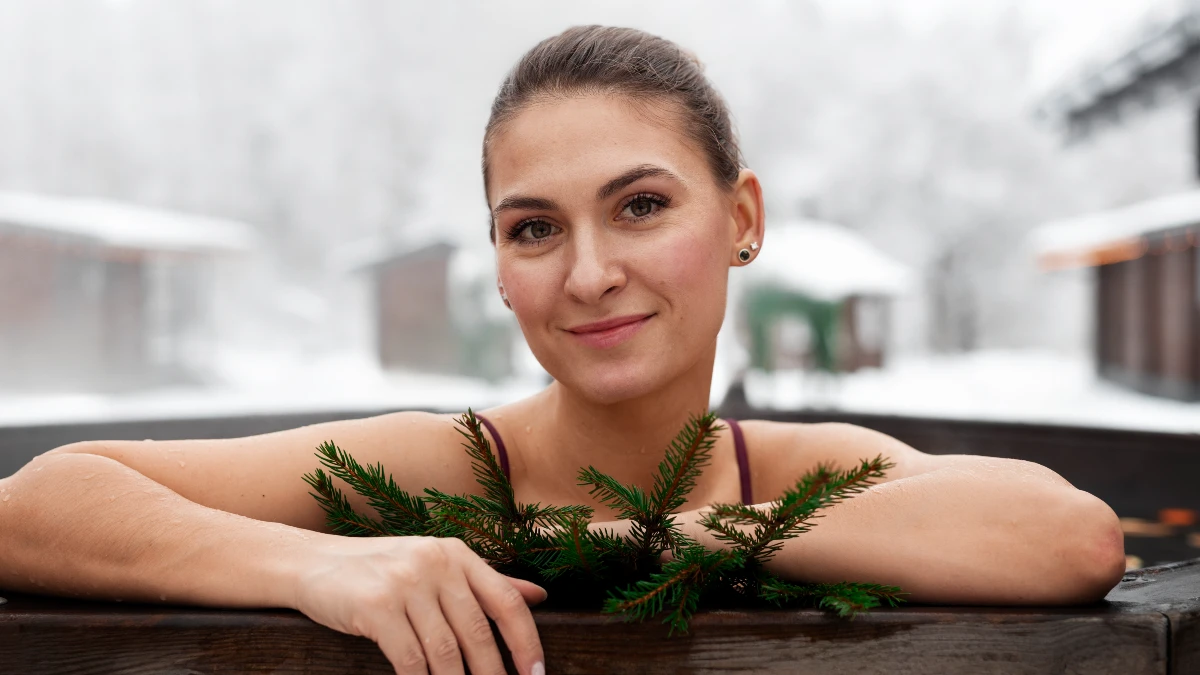What if your daily cold plunge is actively sabotaging your muscle gains? Many chase the promised testosterone boost from cold water, equating that icy shock with a hormonal surge.
The science, but, tells a very different story. This guide cuts through the online noise to reveal the truth. We will show you why that post-workout shower might be blocking your progress.
You will learn what really happens to your body in the cold and discover the proven strategies that genuinely support your hormonal health.
Why the Cold Shower Myth is Wrong
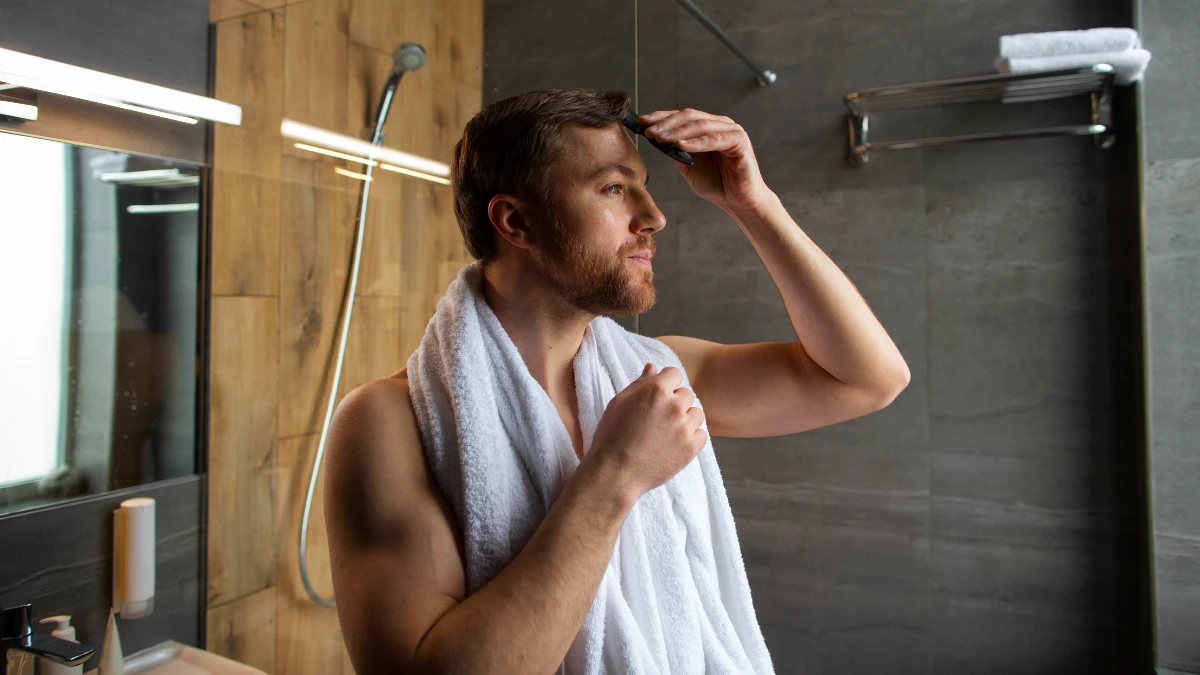
Cold showers are a hot topic. Health influencers and athletes say they can fix a lot of modern problems. One of the biggest claims is that a cold shower can triple your testosterone naturally.
This idea is popular because it sounds like an easy fix. Men want more energy, better performance, and good health. A cold shower seems like a simple way to get it. People share stories online about feeling powerful and full of energy after a cold plunge. They think this feeling comes from a testosterone boost.
But what you feel isn’t always what’s happening in your body. Your hormone system is very complex. It’s affected by exercise, food, sleep, and stress. The idea that a quick blast of cold water could triple a key hormone needs a closer look.
This guide will give you the real story for 2025. We will look at the actual science, not just stories and marketing. You will learn what really happens to your hormones when you get cold. We will bust this myth and show you the real benefits of cold exposure. Then, you’ll have a science-backed plan for your health.
Why Cold Plunges After the Gym Can Lower Your Testosterone
Cold Plunge After Lifts: Hindering Muscle & Strength Gains?
The Immediate Post-Workout Window
The period directly following resistance training is crucial for initiating muscle repair and growth. This is when the body begins a cascade of inflammatory and hormonal responses necessary for adaptation.
Contrary to popular belief for general recovery, integrating cold water immersion (CWI) during this specific window can be counterproductive if muscle hypertrophy is the primary goal.
Long-Term Adaptations Impaired
The inhibitory effect of post-exercise CWI is not just acute but accumulates over time. Consistent use after strength training sessions can lead to significantly reduced gains in muscle mass and strength.
This is because the natural inflammatory response and temporary soreness following a workout are not “damage” to be fixed, but rather vital signals that trigger the body’s adaptive growth processes. CWI interferes with this essential signaling.
Strategic Use for Specific Goals
While detrimental for muscle growth, CWI isn’t universally “bad.” Its application should align with specific athletic objectives:
- Endurance Athletes: Can use CWI for recovery without concern for blunting muscle growth, as their primary goal is not hypertrophy.
- Weight-Class Athletes (e.g., combat sports): May strategically use CWI post-resistance training to gain strength benefits while mitigating unwanted muscle mass accumulation to stay within a weight category.
- Pain Management: Effective for acute pain relief and reducing inflammation that is NOT part of the desired adaptive response (e.g., injury, high-frequency training where hypertrophy isn’t a concern).
If you lift weights to build muscle, when you recover is very important. The time right after a workout is when your body starts to repair and get stronger. This is where the science on cold water immersion (CWI) is clearest. And it shows the exact opposite of what people claim. Using a cold plunge after you lift can actually block the hormones that build muscle and stop your long-term progress.
A key 2019 study shows this clearly. Researchers had men do a tough squat workout. One group took a 15-minute cold bath (at 15°C) afterward. The other group just rested. The results were clear. The rest group got the normal post-workout rise in testosterone. But the cold bath group’s testosterone increase was completely stopped. Even worse, an hour later, their testosterone had dropped way below where it was before they even started the workout. The cold bath also stopped the body’s normal inflammation signals that help with muscle growth. This shows that a cold plunge after lifting creates a worse environment for building muscle.
This isn’t just a one-time problem. It adds up over time. A 12-week study looked at what happens when you regularly take cold baths after lifting. One group of men took a 10-minute cold bath (at 10°C) after each workout. The other group did a light cooldown, like easy cycling. After 12 weeks, the group that did the light cooldown gained much more muscle and strength than the cold bath group. This strongly suggests that blocking the muscle-building signals over and over leads to smaller gains.
Here’s the reason this happens. People think the soreness and swelling after a workout are bad things to get rid of. But they are actually important signals. They tell your body to start building new muscle protein and make your muscles grow. When you jump into cold water, your blood vessels squeeze shut and your muscle temperature drops fast. This short-circuits the whole process. The cold water silences the important message that tells your muscles to get bigger and stronger. So, if your goal is to build muscle and strength, using cold baths after you lift is a bad strategy.
This is the big mix-up with cold water therapy. The main benefit people want—less soreness—is the very thing that hurts their progress. The short-term swelling from lifting weights is not a problem to be fixed. It’s a necessary part of getting stronger. When you use a cold bath to feel less sore now, you are trading long-term muscle and strength gains for a little bit of comfort today.
But this information can be useful for some specific athletes. An endurance runner or a fighter in a weight class might lift weights for strength but not want to get bigger. For them, a cold plunge after lifting could be a smart tool. It could help them get some benefits from strength training while stopping the muscle growth they don’t want. This shows that you have to match your recovery method to your specific goal.
Cold Showers at Rest: A Stressor with a Hormonal Cost
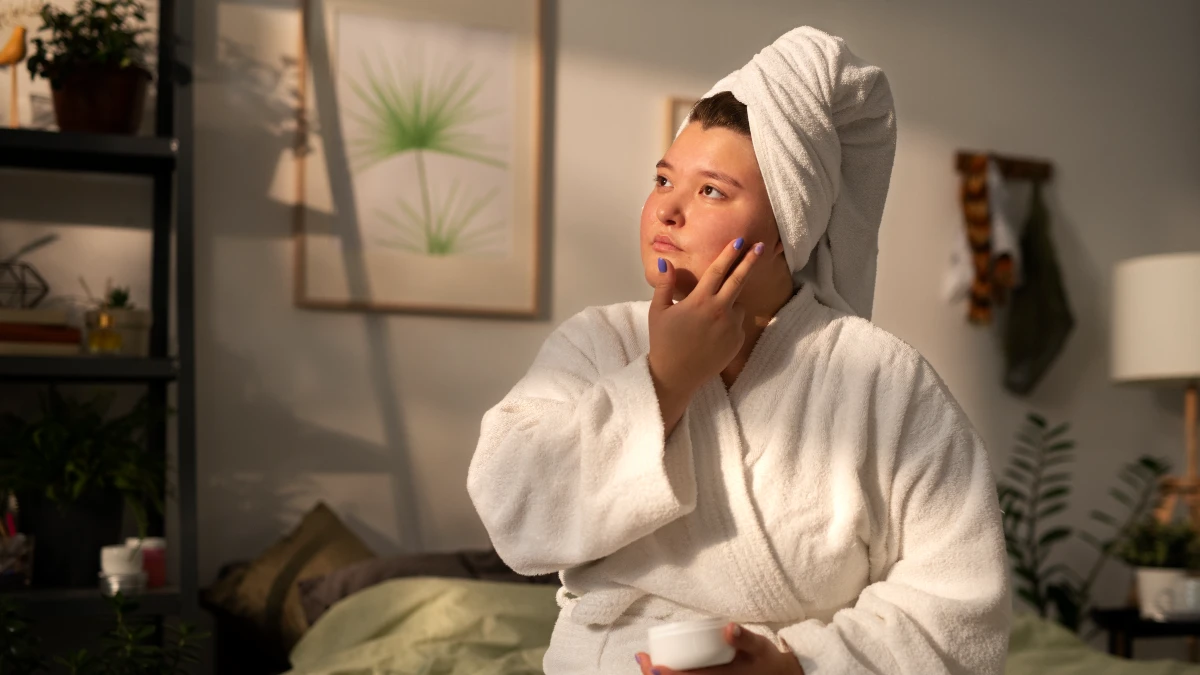
We know that cold plunges after a workout are a bad idea for muscle growth. But what about taking a cold shower on its own, like first thing in the morning? This is a different situation. Your body isn’t recovering from exercise. It’s just reacting to a sudden, cold shock. The science here is a bit mixed, but it still doesn’t support the idea that cold showers boost testosterone. In fact, they often do the opposite.
An early study from 1991 looked at what happens to young men during cold water exposure. The results were interesting. When the men exercised, their testosterone went up by about 21%. But when they were exposed to cold water, their testosterone went down by 10%. This is direct proof that for young, healthy men, the stress of cold can lower testosterone, not raise it.
More recent studies using Whole-Body Cryotherapy (WBC) add another important piece to the puzzle. It seems the effect of cold depends on your age. A 2022 study tested two groups of men: one in their 20s and one in their 40s. They each spent three minutes in a cryotherapy chamber. Two hours later, their hormones told very different stories. The younger men’s testosterone levels went down, just like in the 1991 study. But the men in their 40s saw their testosterone go up by 27%. This difference between age groups is a huge deal. It proves that you can’t make a simple claim that cold boosts testosterone for everyone. Your body’s reaction depends on where it’s starting from.
To make sense of this, think about how your body handles stress. A sudden, intense cold shock is a major stressor. Your body’s number one job is to survive by staying warm. It does this by sending a “fight or flight” signal. This signal releases stress hormones like adrenaline and cortisol. When your body is in survival mode, it puts other jobs on the back burner. Things like reproduction and muscle building are not a priority. The energy is used to keep you warm, so the system that controls testosterone can get temporarily shut down. This helps explain why a cold shock might lower testosterone, especially in a young person whose system is already working well.
The different results from these studies show one key thing: the claim “cold exposure boosts testosterone” is too simple. The effect depends on the type of cold (a 15°C bath vs. a -130°C chamber), the timing (after a workout vs. at rest), and who you are, especially your age. The fact that good studies show opposite results isn’t bad science. It just shows how complex our bodies are. You can’t assume that a short, cold shower at home will give you a testosterone boost. The most honest answer is that the effect is complicated, and in many cases, it might be more harmful than helpful for your testosterone levels.
What the Studies Say About Cold Exposure and Testosterone
This table breaks down the key studies so you can see the results for yourself. It shows how different methods and situations lead to different outcomes.
| Study (Author, Year) | What They Did | Who They Studied | When They Did It | How They Did It (Temp/Time) | What Happened to Testosterone |
| Egaña et al., 2019 | Cold Water Bath | Men who lift weights | After a workout | 15°C for 15 min | Stopped the normal testosterone rise. Levels even dropped below the starting point after 60 minutes. |
| Roberts et al., 2015 | Cold Water Bath | Active men | After workouts (for 12 weeks) | 10°C for 10 min | Led to smaller muscle gains over time, showing a long-term negative effect. |
| Sakamoto et al., 1991 | Cold Water Exposure | 19-year-old men | At rest | Not specified | Testosterone went down by 10.0%. |
| Ziemann et al., 2022 | Whole-Body Cryotherapy | Healthy men (20s vs. 40s) | At rest | -130°C for 3 min | Testosterone went down in the 20s group but went up by 27% in the 40s group. |
| Słomko et al., 2021 | Sauna + Cold Bath | Young adult men | At rest | 4 rounds of sauna + 1 min cold bath (10-11°C) | No real change in testosterone levels. |
This summary makes it clear that the link between cold and testosterone is not simple. The effect changes based on exercise, the type of cold therapy, and your age. The strongest findings show a negative impact for athletes, while other studies show conflicting or age-based results.
How to Use Cold Exposure the Right Way
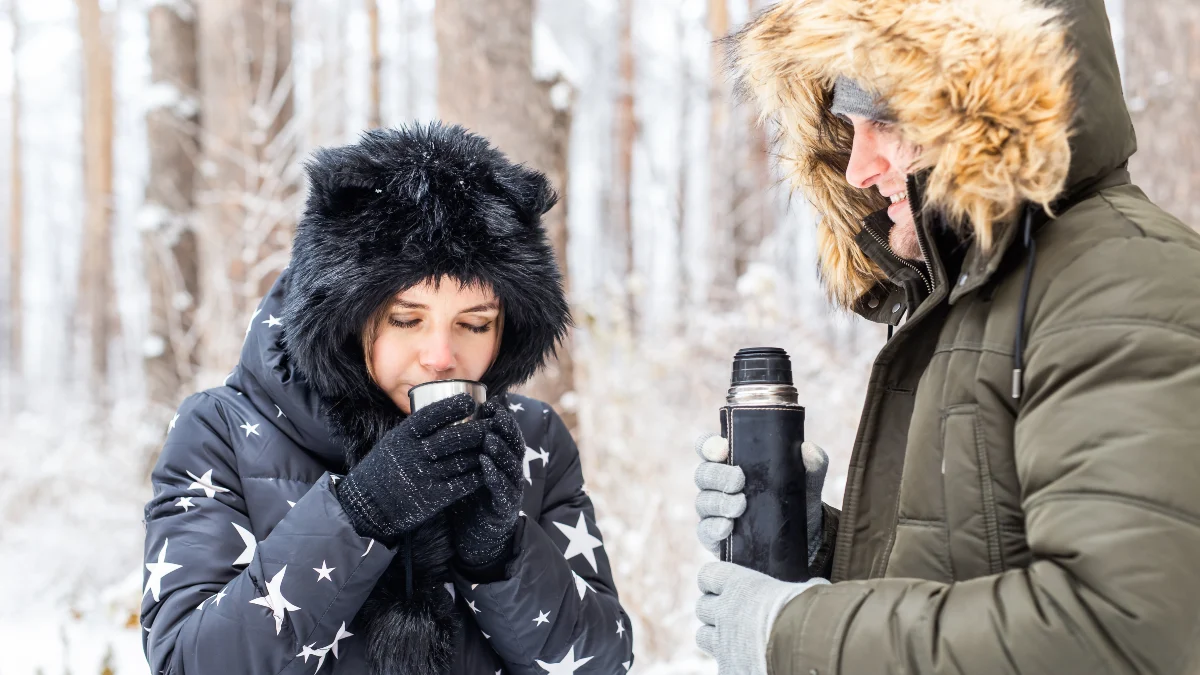
We’ve shown that cold showers are not a magic trick for boosting testosterone. So why are they so popular, and why do people feel so good after them? This section will explain the real, science-backed benefits of cold therapy. You’ll learn the true reasons it works. We’ll look at a new way to use it to improve your workouts and find out what causes the “cold plunge high.” This will teach you how to use this powerful tool for what it actually does.
The Pre-Workout Plan: A New Way to Boost Performance
Taking a cold bath after you lift weights is a bad idea because it stops muscle growth. But a new, smarter idea is starting to appear: using cold exposure before your workout. This changes the goal from recovery to performance. You’re not trying to reduce swelling; you’re trying to fire up your body for the work ahead. There isn’t a lot of research on this yet, but the science behind it makes a lot of sense.
The main idea is to turn on your body’s “fight or flight” system right before you train. A short, intense blast of cold acts as a good kind of stress. It makes your body release adrenaline and norepinephrine. These are your body’s natural performance enhancers. They increase your heart rate, get more blood to your muscles, and make you feel super alert, focused, and driven. By getting into this ready state before you hit the gym, you might have a better, more intense workout. And a better workout is what leads to real, long-term gains in muscle and hormones.
This method avoids the big problem of post-workout cold plunges. Instead of messing with the signals your body needs to grow, it helps you perform better during the workout itself. The American College of Sports Medicine suggests that a cold blast in the morning or before exercise is a good way to get that adrenaline release without hurting your muscle-building goals later. Pre-cooling your body can also help you perform better and get less tired, especially if you’re working out in the heat. This could lower the overall stress of your workout and prevent overtraining, which is known to kill testosterone.
It’s important to be realistic. There aren’t many studies that have measured testosterone after months of pre-workout cold showers. This strategy is based on a good idea that makes sense with what we know about the body, not on a lot of direct proof. But it’s the most logical way to fit cold exposure into a training plan that supports your hormone and performance goals. It uses cold to get the body ready for work, not to stop it from adapting.
The Real “Cold Plunge High”: It’s All About Norepinephrine
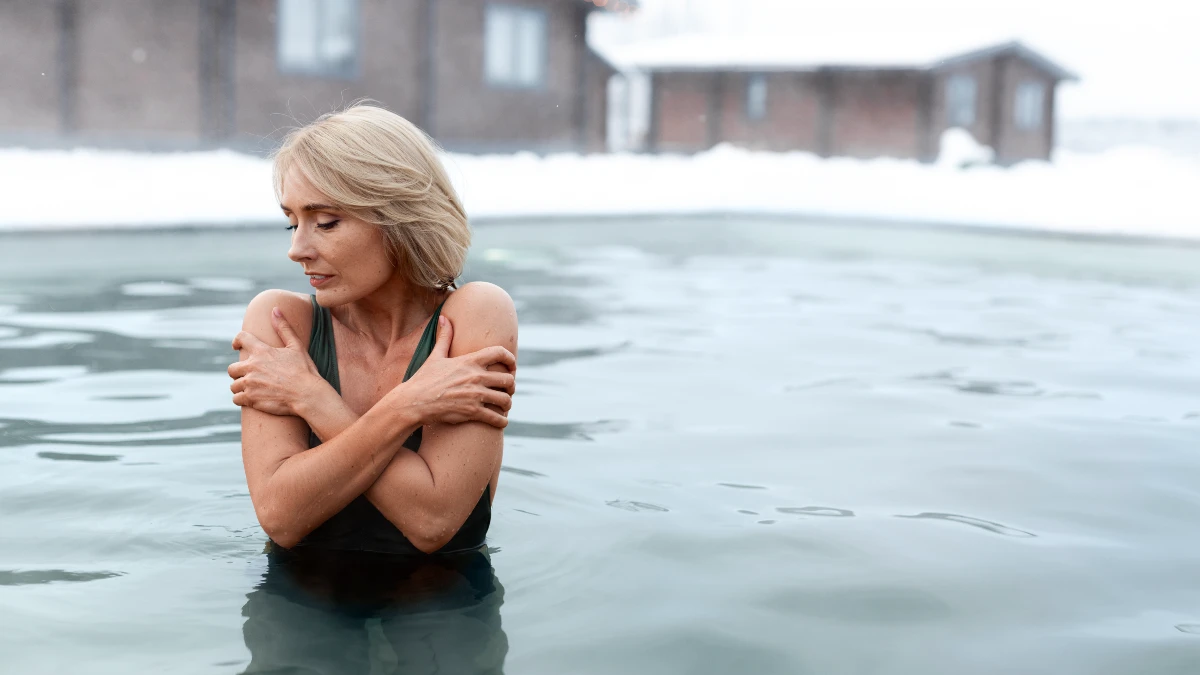
The best and fastest effects of a cold plunge are not on your testosterone. They are on your brain chemicals. That amazing, clear-headed feeling of focus and energy you get after a cold shower is a real, physical event. But it doesn’t come from a testosterone spike. It comes from a huge rush of a brain chemical called norepinephrine. If you get this, you get the real value of cold showers. It also explains why the testosterone myth started in the first place.
Lots of research shows that a quick cold shock is one of the best ways to release norepinephrine without using drugs. Studies have found that getting into cold water can raise norepinephrine levels by 200-300% or even more. That’s a massive change. Norepinephrine is key for attention, focus, mood, and feeling awake. A rush of it wakes up your brain, making you feel sharp and driven. This is the real reason you feel so good and powerful after a cold shower.
This explains the whole thing perfectly. You take a cold shower and feel a huge change in your body. Your heart beats faster, you breathe deeper, and you feel a rush of mental clarity and energy. The feeling is real and strong. In a world where people connect feeling powerful with high testosterone, it’s easy to think that’s what’s happening. You are feeling a real biological response, but you are naming the wrong cause. The whole “cold showers boost testosterone” idea is likely based on this big mistake. The science backs this up: studies show a huge spike in norepinephrine, but they don’t show a rise in testosterone. In fact, they often show a drop.
When you realize the main benefit is a norepinephrine rush, you can use cold exposure in a smarter way. It’s no longer a questionable hormone trick. It becomes a reliable tool to manage your nervous system. If you use it at the right time, like in the morning to wake up or before a big task, a cold shower can be a great way to boost focus and get more done. This is a real benefit that is backed by science. By knowing the true reason it works, you can use cold exposure for its actual effects on your brain, instead of chasing a hormone boost that isn’t there.
More Than Showers: Cryotherapy and the Wim Hof Method
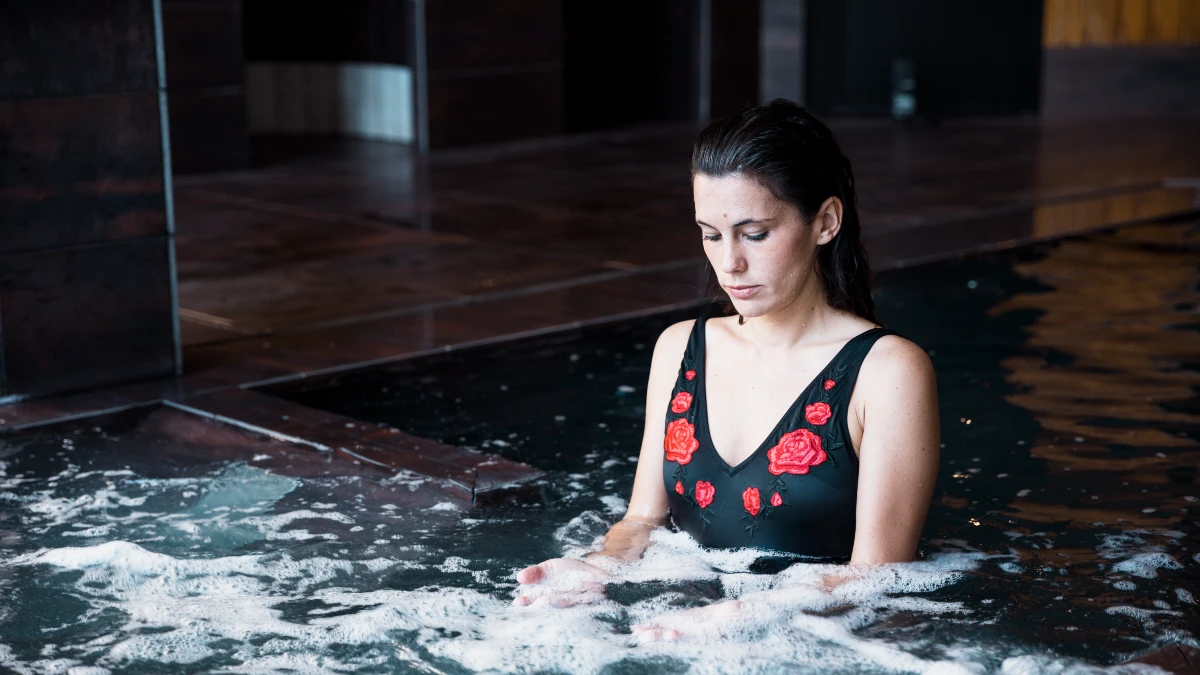
Cold exposure isn’t just about cold showers and ice baths. Two other popular methods are Whole-Body Cryotherapy (WBC) and the Wim Hof Method (WHM). People claim these can help with hormones too. Let’s look at what the science says about them.
Whole-Body Cryotherapy is when you stand in a special chamber with very cold, dry air (below -100°C) for 2-3 minutes. As we saw earlier, the best research on WBC and testosterone found that the effect depends on your age. It lowered testosterone in men in their 20s but raised it in men in their 40s. This alone makes it hard to say it’s good for everyone’s hormones. Some companies that sell WBC say it helps with recovery and hormone balance. One study did find a 28% rise in free testosterone for 24 hours after a WBC session. But overall, the proof is not consistent. The studies are often small and use different methods. WBC is a strong way to wake up your nervous system, but we need more and better research to know for sure what it does to testosterone.
The Wim Hof Method has three parts: a special breathing technique, cold exposure, and focus. Reviews of the science on this method have made its main benefits clear. The best-proven benefit of the Wim Hof Method is its amazing ability to control the immune system. Research shows that the breathing part especially causes a huge spike in adrenaline. This adrenaline rush then increases anti-inflammatory signals in the body and lowers the signals that cause swelling. This means people who practice it can actually control their body’s inflammation response, which could be very helpful for certain health problems.
But when it comes to testosterone, there is no proof. The scientific reviews, which are the best kind of evidence, don’t even mention testosterone. People who follow the method say they feel better, have more energy, and are in a better mood. But these feelings are likely from the proven effects on adrenaline and the immune system, not from a direct change in testosterone. The benefits of the Wim Hof Method seem real and important, but they are about controlling your immune system, not boosting your hormones. As of 2025, there is no good, scientific proof that the Wim Hof Method directly raises testosterone levels.
The Real Plan to Boost Your Testosterone in 2025

We’ve seen that cold exposure is not the quick fix for hormones that people claim it is. Now we get to the most important part of this guide. The reason so many people are interested in a “hack” like cold showers is because they are dealing with a real problem. Many men have low or less-than-ideal testosterone because of modern life. This section gives you the real, science-backed plan to fix the root causes of this problem. We will move past tricks and talk about the solid foundations of hormone health. These are the powerful strategies that hormone doctors and scientists agree on for naturally raising testosterone.
The Keys to Hormone Health: What Doctors Actually Recommend
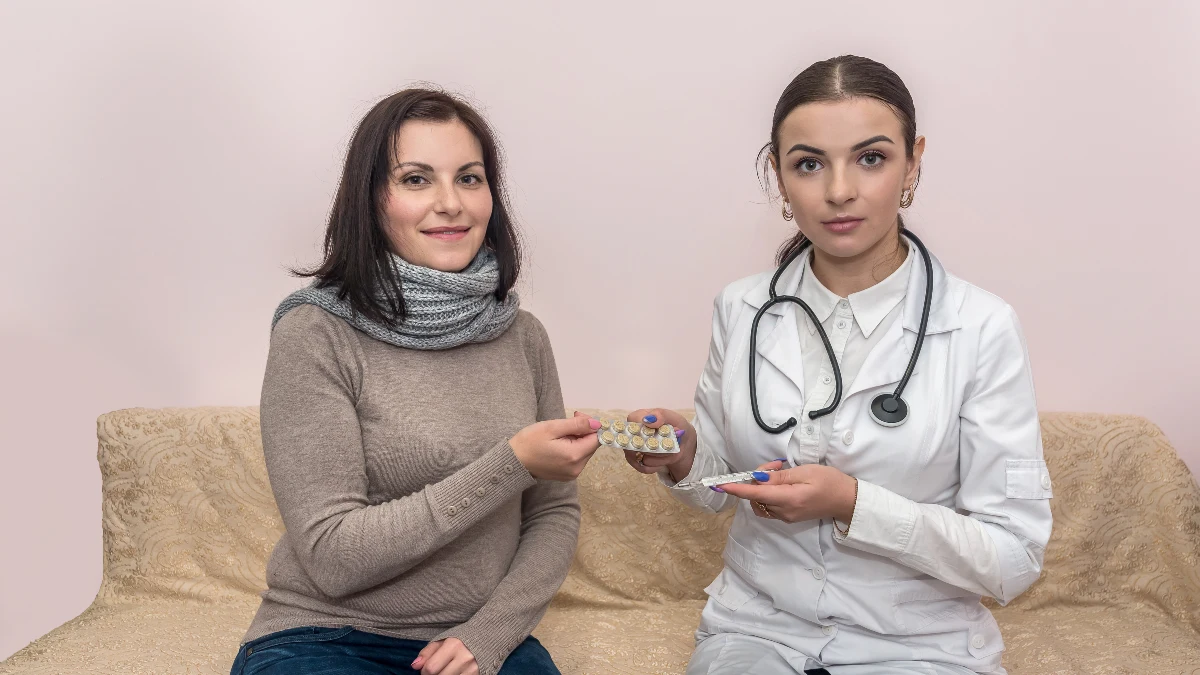
Good hormone health doesn’t come from one secret trick. It comes from consistently doing the basic things that help your body work well. Hormone doctors and exercise experts all agree on this. The best ways to improve your testosterone are by managing your body fat, being active, sleeping well, eating right, and handling stress.
Get Lean
The single most powerful thing you can do for your testosterone is to have a healthy amount of body fat. The link between extra body fat, especially the fat around your organs, and low testosterone is proven. Fat tissue is not just for storage. It’s an active organ that affects your hormones. It has a lot of an enzyme called aromatase. The job of aromatase is to turn testosterone into estrogen.
If a man has too much body fat, this process goes into overdrive. More fat means more aromatase, which means more of your testosterone gets turned into estrogen. This creates a bad cycle. Low testosterone and high estrogen can make you store more fat, which then makes even more aromatase and lowers your testosterone even more. Losing extra body fat breaks this cycle. When you reduce fat, you reduce aromatase, and less of your testosterone gets converted to estrogen. The effect is huge. Studies show that losing just 15 to 20 pounds can make a big difference. For every point you drop on the Body Mass Index (BMI) scale, your testosterone can go up.
Lift Heavy Things
Most exercise is good for you, but lifting weights is special. It directly signals your body to release muscle-building hormones. Putting your muscles under a heavy load is a powerful message that tells your body to release testosterone and human growth hormone. This is how your body adapts to the stress of lifting. The hormone rush helps repair and grow your muscles, making them stronger for next time.
A good weightlifting plan, done regularly, can lead to higher testosterone levels over time. You should focus on big exercises that use a lot of muscles at once, like squats, deadlifts, and presses. These cause the biggest hormone response. It’s important not to overdo it. Overtraining, especially if you’re not eating enough, can have the opposite effect. It can raise your stress hormone cortisol and lower your testosterone. But lifting weights just two or three times a week for 30 to 45 minutes can have major benefits for your hormones and your overall health.
Make Sleep a Priority
Sleep is not just rest. It’s a time when your body is actively working to regulate your hormones. For men, most of the day’s testosterone is made during sleep, especially during deep sleep. Not getting enough sleep, or having bad quality sleep, is one of the fastest ways to crush your natural testosterone production.
The science on this is very clear. One famous study from the University of Chicago had healthy young men sleep only five hours a night for one week. The result was a huge 10-15% drop in their daytime testosterone levels. To put that in perspective, that’s the same amount of testosterone loss that happens over 10 to 15 years of normal aging. And it happened in just seven days. Another review of studies confirmed that going without sleep for 24 hours or more significantly lowers men’s testosterone. Large studies of the American population show the same thing: men who sleep less have lower testosterone. Sleep is not optional for hormone health. Getting 7 to 9 hours of good sleep every night is a basic requirement for a healthy hormone system.
Eat for Your Hormones
Your body needs the right building blocks to make hormones. Hormones like testosterone are made from cholesterol. So, diets that are very low in fat can hurt your body’s ability to make them. A balanced diet with healthy fats from foods like olive oil, avocados, nuts, and fatty fish is key.
Certain vitamins and minerals are also very important. Zinc is needed to make testosterone, and not having enough is linked to low levels. You can get zinc from oysters, beef, and beans. Magnesium is another key mineral. It seems to make more testosterone available for your body to use. You can find it in leafy greens like spinach and in almonds. Getting enough Vitamin D is also vital for hormone health. You can get it from the sun and from eating fatty fish.
Manage Your Stress
Your main stress hormone, cortisol, has a push-and-pull relationship with testosterone. Short bursts of cortisol are normal and needed. But when you are always stressed, your cortisol levels stay high, and this is very bad for your testosterone-producing system. High cortisol sends a constant danger signal to your body. In this state, your body focuses on survival and shuts down things it doesn’t need right now, like reproduction and muscle building. This directly lowers testosterone production.
Managing your stress is a key part of keeping your hormones healthy. This can include things like meditation, spending time in nature, or just making sure you recover properly from your workouts. By lowering your stress and your baseline cortisol levels, you take the brakes off your body’s natural testosterone-making machine.
Know Your Numbers: What is Normal?

To improve your testosterone, you need to know what’s normal. Testosterone levels change during the day. They are highest in the morning. They also naturally go down as you get older, by about 1% per year after age 30. A normal range for total testosterone in adult men is usually between 300 and 1,000 nanograms per deciliter (ng/dL).
Normal Total Testosterone Ranges by Age in Men (ng/dL)
- Late Teens (17–18 years): 300 – 1,200
- Adults (19+ years): 300 – 1,000
- Age 40-49: 252 – 916
- Age 50-59: 215 – 878
- Age 60-69: 196 – 859
- Age 70-79: 156 – 819
Clinically low testosterone is a big health problem. It affects 4 to 5 million men in the United States. It’s more common in older men and men who are obese or have type 2 diabetes. Even though it’s common and causes problems like low energy, low sex drive, and depression, it often goes undiagnosed. Some reports say only 5% of men who have it get treatment.
This big, unaddressed problem helps explain why “hacks” like cold showers are so popular. People are looking for a simple, powerful solution to a real and growing issue. Many men feel the effects of poor hormone health, which is often caused by modern life: bad sleep, unhealthy diets, and constant stress. Fixing these core problems is hard work. A two-minute cold shower, on the other hand, feels like you’re doing something powerful, but it doesn’t require you to change your life. The myth of the cold shower lives on because it offers an easy fix to a hard, lifestyle-based problem. But a real solution means you have to stop looking for easy tricks and start working on the big things that actually fix the root cause.
What Really Works for Natural Testosterone
This table compares different natural strategies. It ranks them based on how much they can help your testosterone and how strong the science is. This helps you see where to put your effort for the best results.
| Strategy | How Much It Can Help Testosterone | How Strong is the Proof? |
| Fixing Bad Sleep (e.g., 8h vs. 5h a night) | Fixes a 10-15% drop | High |
| Losing a Lot of Fat (e.g., 15-20+ lbs) | +15-25% or more | High |
| Lifting Weights Regularly (e.g., 2-3x a week) | +10-20% | High |
| Managing Long-Term Stress | Fixes a 10-20% (or more) drop | High |
| Getting Enough Vitamins/Minerals (Fixing a lack of Zinc, Mg, Vit. D) | +10-30% (if you are low) | Moderate |
| Cold Bath After a Workout | Negative Impact / Blocks Muscle Growth | High |
| Cold Bath Before a Workout | Not proven / New idea | Low |
| Cold Exposure at Rest | Inconsistent / Depends on age / Possibly negative | Moderate |
This table makes the order of importance very clear. The most important things for testosterone are sleep, body fat, and lifting weights. Fixing problems in these areas will give you much bigger improvements than any other trick. It also shows that cold baths after a workout are a bad idea for muscle growth, and that other types of cold exposure have unclear or mixed results.
The Smart Plan and Final Decision

We’ve busted the myths and reviewed the real science of hormone health. This last section puts it all together into a clear, simple plan. It gives you a smart way to use cold exposure for its real benefits, without chasing the false promise of more testosterone. This will leave you with a clear path forward.
The 2025 Smart Cold Exposure Plan
This plan is designed to use the real, science-backed benefits of cold exposure while avoiding the things that can hurt your hormones and workout gains. It treats the practice as a tool for your nervous system and mental strength.
- The Goal: The main goals are to boost norepinephrine and dopamine for better mood, focus, and alertness; to build mental toughness; and maybe to get your nervous system ready for a workout. The goal is not to directly raise your testosterone.
- Timing is Everything: The best time for cold exposure is in the morning when you wake up, or 15-30 minutes before a workout. This uses the adrenaline rush to help you wake up and feel driven. To protect your muscle-building signals, you must avoid cold water for at least 4 to 6 hours after you lift weights.
- Temperature: The best temperature to get these effects is between 11°C and 15°C (52°F and 60°F). For most people, turning your shower to the coldest setting will be close enough.
- How Long: You get the biggest benefits quickly. The norepinephrine release happens fast. A time of 2 to 5 minutes is enough to get the brain chemical effects. If you are new, start with just 30 seconds and work your way up. Going longer doesn’t add much benefit and increases risks.
- The Method: To get the most metabolic benefits, you can try the “Søberg Principle,” from cold exposure researcher Dr. Susanna Søberg. This means you end your shower on cold and let your body warm itself up naturally. Don’t immediately grab a towel or warm clothes. This makes your body’s internal heating system work harder, which could improve your metabolism over time.
Coclusion
The big claim that cold showers can triple your testosterone is a good story, but it is not supported by science. This guide concludes that this claim is a myth. The research shows that when used at the wrong time—specifically, after lifting weights—cold water is actually bad for your muscle-building hormones. It stops the testosterone response and leads to smaller gains in muscle and strength over time. When used at other times, its effects are mixed, depend on your age, and can sometimes be negative.
But this doesn’t mean you should give up on cold exposure completely. It is a truly powerful tool for your well-being. It’s not a testosterone fix, but it is a great way to manage your nervous system. The amazing feeling of alertness, clarity, and good mood that people feel is real. It comes from a huge, proven rush of norepinephrine, a brain chemical that is great for focus and your mental state. The discipline it takes to face the cold is also a great way to build mental toughness and handle stress better. These are real and valuable benefits.
In the end, this report shows a basic truth about our bodies: there are no shortcuts to good hormone health. The way to naturally raise your testosterone is not by changing the temperature of your shower. It is by consistently mastering the basics of health: getting and staying lean, lifting weights regularly, getting enough high-quality sleep, eating good food, and managing your stress. These are the things that have the power to make a real, lasting change in your hormone system. Cold exposure can be a good part of a healthy life when you use it smartly for its real brain-chemical benefits. But mastering the basics will always be the most important thing for your energy and performance.

